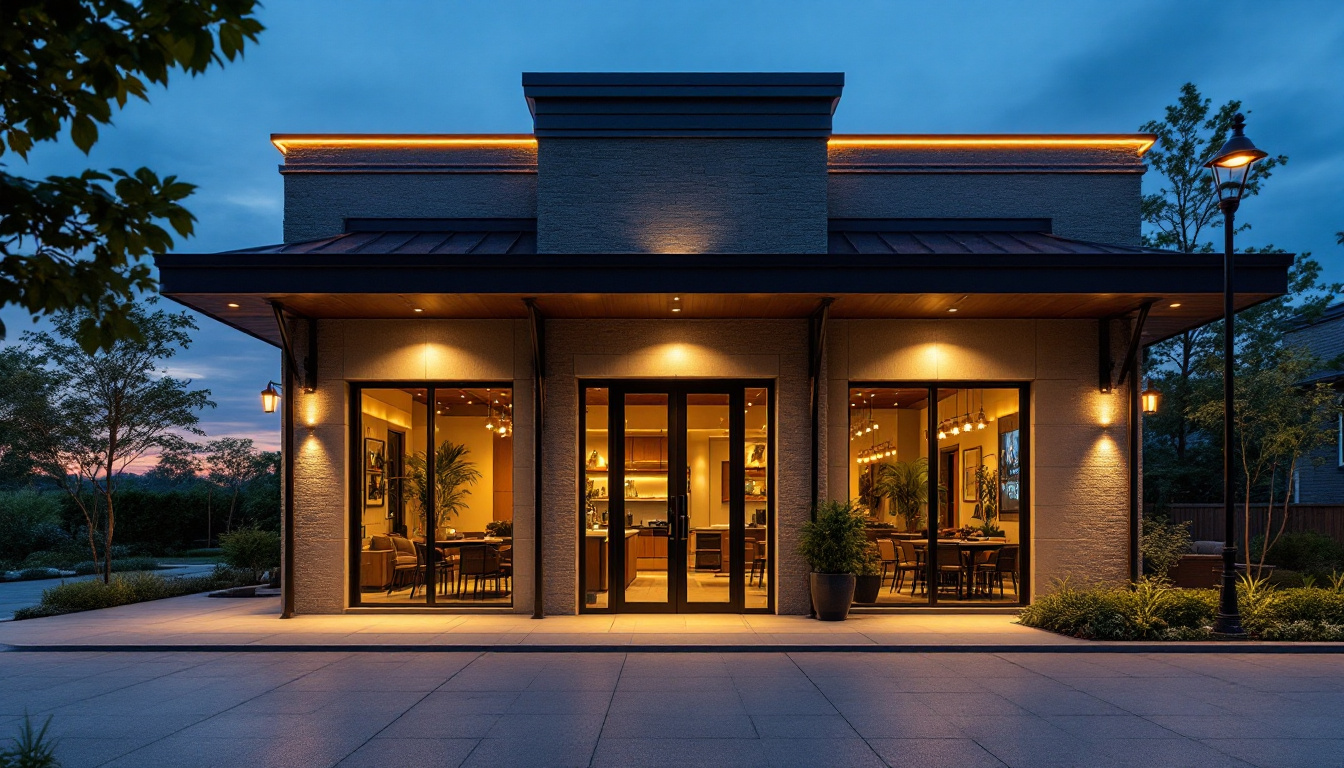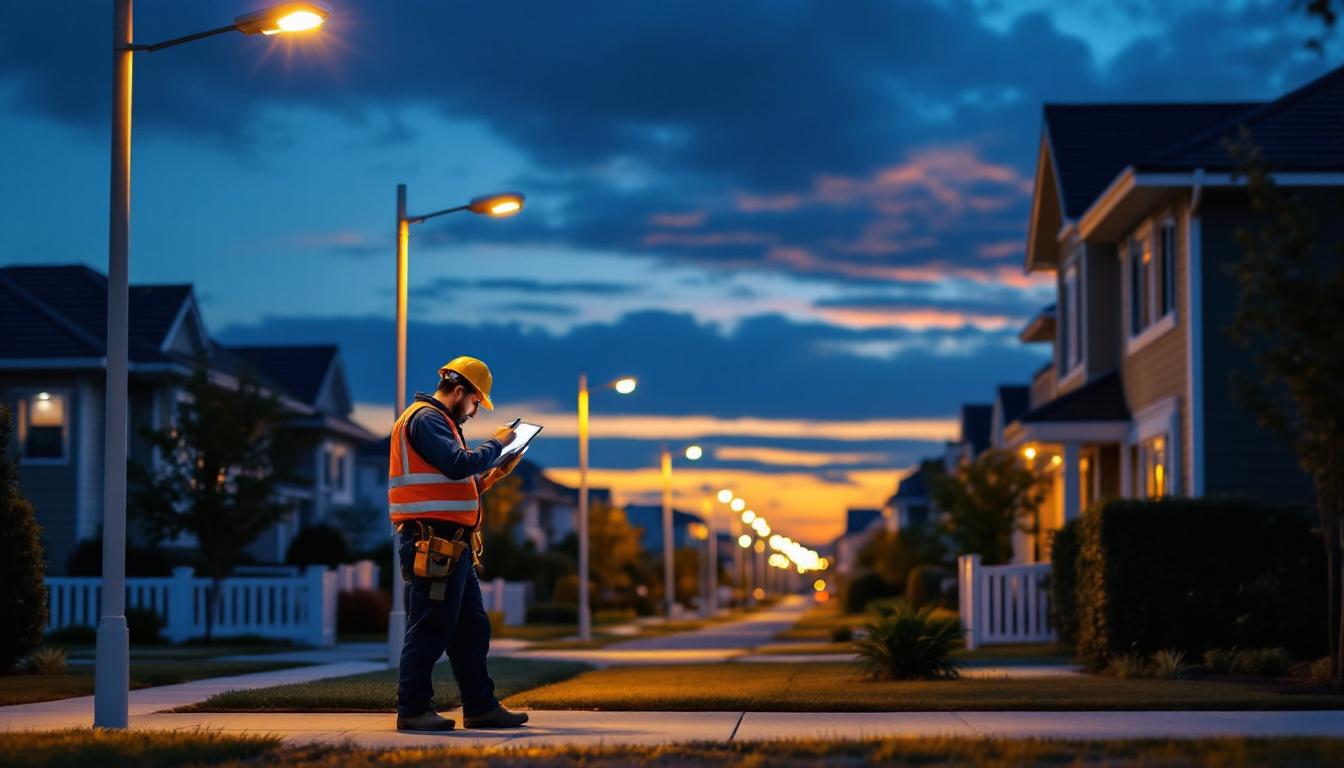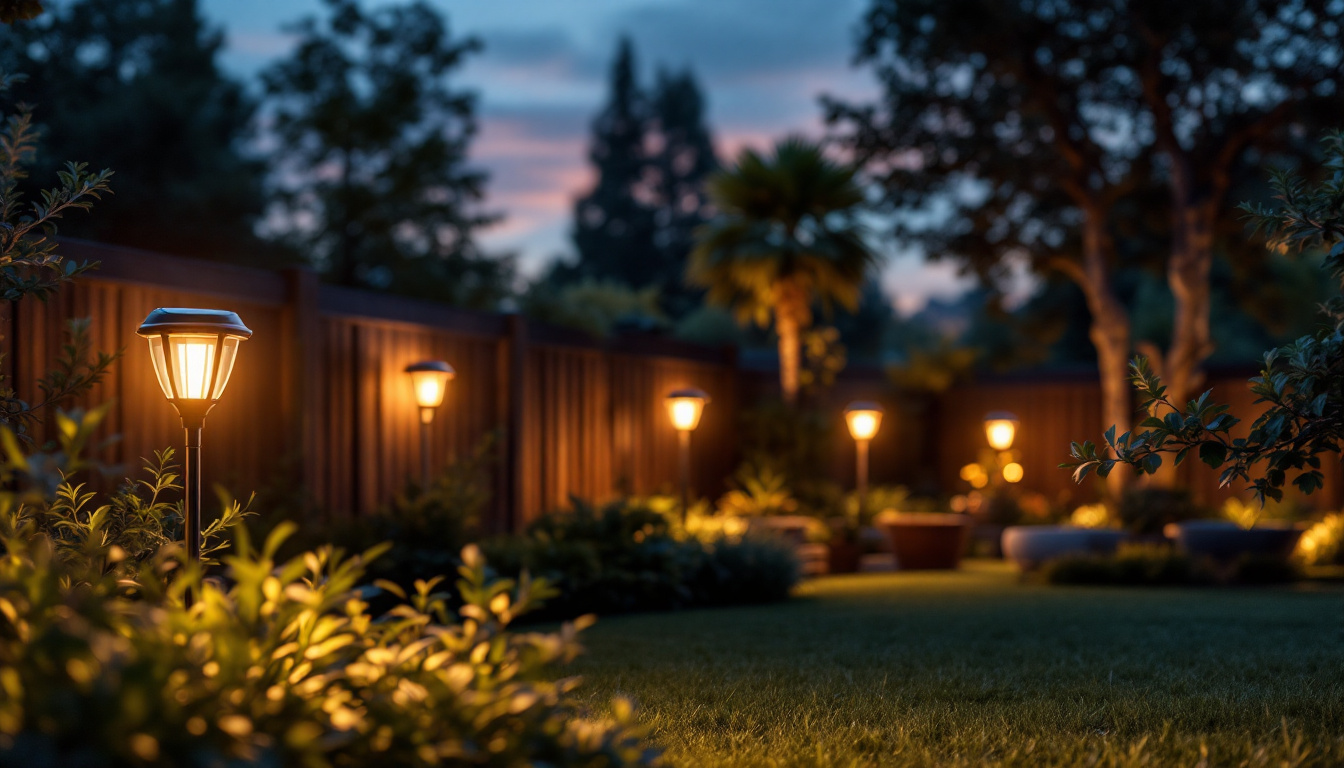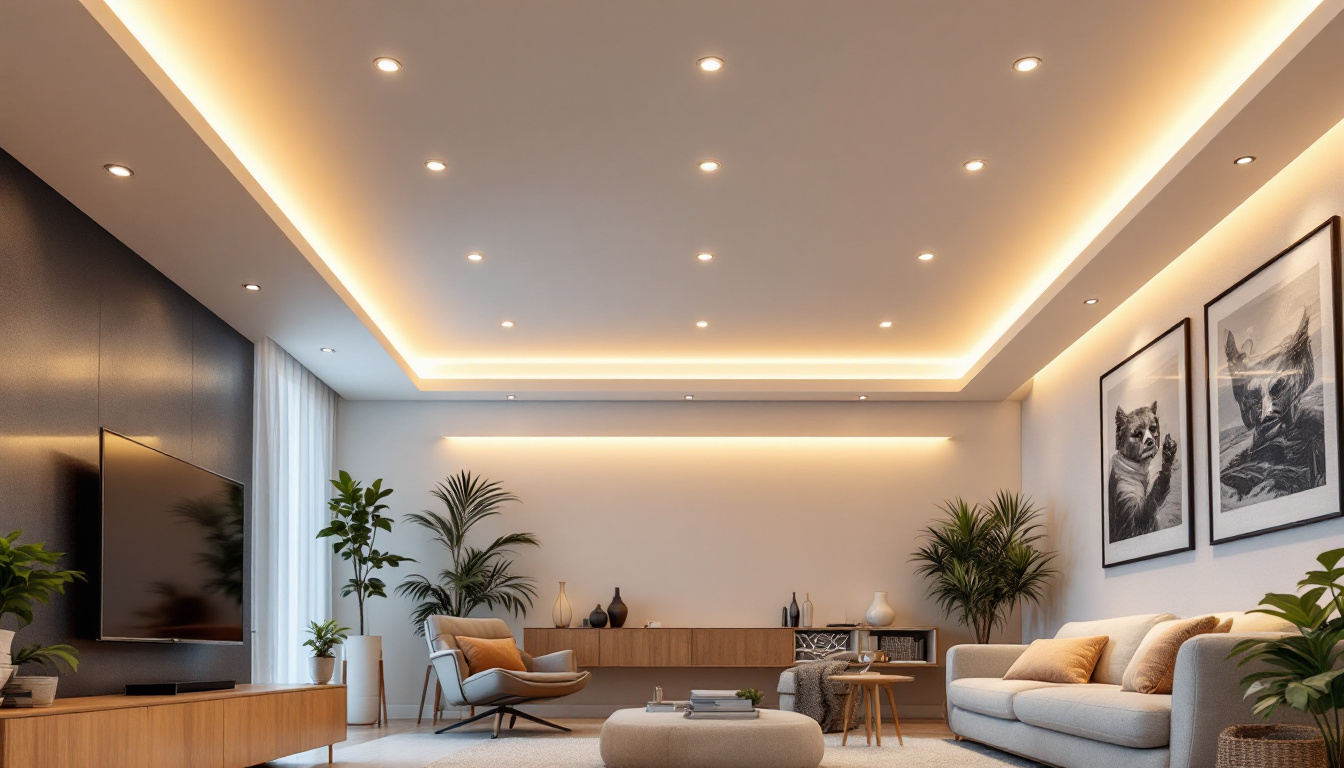
In the world of commercial lighting, the exterior aspect often gets overshadowed by interior designs. However, exterior commercial lighting plays a crucial role in not only enhancing the aesthetic appeal of a property but also ensuring safety and security. For lighting contractors, understanding the common pitfalls in exterior lighting projects is essential for delivering successful installations. This guide outlines key considerations and strategies to avoid common mistakes, ensuring a seamless process from planning to execution.
Planning is the backbone of any successful exterior lighting project. It sets the stage for the entire installation process, influencing design choices, budget allocation, and timelines.
Before diving into the technical aspects, it is essential to have a clear understanding of the client’s needs and expectations. Engaging in thorough discussions with the client about their vision, functional requirements, and budget constraints can help shape the project effectively. This dialogue not only fosters a collaborative environment but also helps in identifying potential challenges early on. By actively listening to the client’s preferences, such as their desired ambiance or specific areas they wish to highlight, the planning team can tailor solutions that resonate with the client’s lifestyle and aesthetic preferences, ensuring a more satisfying outcome.
Conducting a comprehensive site assessment is another critical step in the planning phase. This involves evaluating the existing infrastructure, landscape features, and potential obstacles that may affect lighting placement. Factors such as the surrounding environment, local regulations, and existing electrical systems should also be considered. A well-executed site assessment can prevent costly adjustments later in the project. Furthermore, assessing the site during different times of the day can provide insights into how natural light interacts with the space, allowing for more informed decisions about the type and placement of lighting fixtures. This thorough evaluation can also highlight opportunities for creative lighting solutions that enhance the overall aesthetic while addressing any safety concerns.
Designing an effective exterior lighting plan requires a balance between aesthetics and functionality. It is important to create a lighting scheme that enhances the architectural features of the building while providing adequate illumination for safety. Utilizing a mix of lighting types—such as ambient, task, and accent lighting—can help achieve this balance. Additionally, considering energy-efficient options can result in long-term savings for the client. Beyond just the technical specifications, designers should also take into account the seasonal changes and how the lighting will appear throughout the year. For instance, during winter months, certain areas may require more illumination due to shorter daylight hours, while summer might allow for softer, more ambient lighting. Incorporating smart lighting technologies can also offer the client greater control over their outdoor spaces, allowing them to adjust brightness and color temperature according to their needs and preferences, thus enhancing the overall experience of the outdoor environment.
The selection of lighting fixtures is a crucial aspect of any exterior lighting project. The right fixtures can enhance the overall design while ensuring durability and performance. A well-thought-out lighting scheme not only illuminates spaces but also highlights architectural features, creates ambiance, and improves safety. Therefore, understanding the various options available and their implications is essential for achieving the desired outcome.
Exterior lighting fixtures are exposed to various weather conditions, making material durability a top priority. Choosing fixtures made from corrosion-resistant materials, such as stainless steel or high-grade plastics, can significantly extend their lifespan. It is also advisable to select fixtures with appropriate IP ratings to ensure they can withstand moisture and dust ingress. Additionally, considering the finish of the fixtures is important; powder-coated finishes can provide an extra layer of protection against fading and wear, ensuring that the fixtures maintain their aesthetic appeal over time. Regular maintenance, such as cleaning and inspections, can further enhance the longevity of these fixtures, allowing them to perform effectively throughout their intended lifespan.
In an era where sustainability is paramount, energy efficiency should be a key consideration when selecting lighting fixtures. LED technology has revolutionized the lighting industry, offering longer lifespans and lower energy consumption compared to traditional options. Encouraging clients to invest in energy-efficient fixtures not only reduces operational costs but also aligns with environmentally friendly practices. Moreover, integrating smart lighting solutions can provide additional energy savings; features such as motion sensors and timers can ensure that lights are only on when needed, further minimizing waste. This approach not only benefits the environment but can also enhance the overall functionality of the lighting design, providing tailored illumination that adapts to the specific needs of the space.
The quality of light produced by fixtures can greatly impact the effectiveness of an exterior lighting design. Factors such as color temperature and color rendering index (CRI) should be taken into account. A warm color temperature can create a welcoming atmosphere, while a cooler temperature may be more suitable for security purposes. Ensuring that the chosen fixtures provide adequate CRI will enhance the visibility of colors and details in the illuminated area. Additionally, the distribution of light is crucial; fixtures that offer adjustable beams or diffusers can help achieve the desired lighting effects, whether it’s for highlighting landscaping features or providing general illumination. Understanding the interplay of light and shadow can also create depth and interest in outdoor spaces, transforming them into inviting environments that can be enjoyed after sunset.
Proper installation is vital for the functionality and longevity of exterior lighting systems. Adhering to best practices can mitigate potential issues and ensure a successful outcome.
Every region has specific codes and regulations governing exterior lighting installations. Familiarity with these guidelines is essential to avoid legal complications and ensure safety. This includes understanding zoning laws, light pollution regulations, and electrical codes. Ensuring compliance not only protects the contractor but also enhances the client’s reputation.
Wiring is a critical component of any lighting installation. Utilizing proper wiring techniques can prevent electrical hazards and ensure the reliability of the lighting system. It is essential to use weatherproof connectors and conduits to protect against moisture and environmental damage. Additionally, ensuring that all wiring is adequately secured and protected from potential physical damage is crucial for long-term performance.
After installation, thorough testing of the lighting system is imperative. This includes checking for proper functionality, ensuring that all fixtures are correctly aligned, and verifying that the lighting levels meet the design specifications. Commissioning the system not only guarantees that it operates as intended but also provides an opportunity to address any issues before the project is handed over to the client.
Even with careful planning and execution, certain pitfalls can arise during exterior lighting projects. Awareness of these common issues can help contractors navigate challenges effectively.
One of the most frequent mistakes in exterior lighting design is over-illumination. While it may seem beneficial to flood an area with light, excessive brightness can lead to glare and discomfort for occupants and passersby. Striking the right balance is key. Using lighting controls, such as dimmers or timers, can help manage illumination levels and enhance the overall experience.
Exterior lighting systems require regular maintenance to ensure optimal performance. Neglecting this aspect can lead to premature fixture failure and increased operational costs. Educating clients about the importance of routine checks, cleaning, and timely bulb replacements can help maintain the system’s efficiency and longevity.
Exterior lighting should complement the surrounding landscape rather than overpower it. Ignoring the natural features of the environment can result in a disjointed appearance. Incorporating landscape elements into the lighting design, such as highlighting trees or pathways, can create a harmonious blend that enhances the overall aesthetic appeal.
Incorporating technology into exterior lighting design can enhance functionality and efficiency. Advances in smart lighting systems offer new opportunities for contractors to provide innovative solutions.
Smart lighting systems allow for greater control over exterior lighting, enabling clients to customize settings based on their preferences and needs. Features such as remote access, scheduling, and motion sensors can enhance security and energy efficiency. Educating clients about these options can help them make informed decisions that align with their lifestyle and business operations.
Utilizing lighting design software can streamline the planning process and improve accuracy. These tools allow contractors to visualize lighting layouts, simulate lighting effects, and calculate energy consumption. By presenting clients with detailed visualizations, contractors can effectively communicate design concepts and gain approval more efficiently.
Effective communication with clients is essential throughout the entire lighting project. Educating clients about the intricacies of exterior lighting can lead to more informed decisions and increased satisfaction.
From the outset, it is important to set realistic expectations regarding timelines, budgets, and outcomes. Providing clients with a clear understanding of the project scope can prevent misunderstandings and build trust. Regular updates during the project can also keep clients informed and engaged, fostering a positive working relationship.
After the installation is complete, offering post-installation support can enhance client satisfaction and loyalty. Providing guidance on maintenance practices, warranty information, and troubleshooting can empower clients to take care of their lighting systems effectively. This ongoing relationship can lead to future projects and referrals.
Exterior commercial lighting is a vital component of any successful project, influencing both aesthetics and functionality. By understanding the common pitfalls and implementing best practices, lighting contractors can deliver exceptional results that meet client expectations. Through careful planning, fixture selection, proper installation, and effective communication, contractors can navigate the complexities of exterior lighting with confidence. Embracing innovation and technology further enhances the ability to provide cutting-edge solutions, ensuring that clients receive the best possible outcomes for their exterior lighting needs.
Ready to elevate your exterior commercial lighting projects with superior quality and value? Look no further than LumenWholesale. Our spec-grade lighting products are designed to meet the highest industry standards, ensuring that your installations shine with reliability and performance. Say goodbye to inflated markups and hello to unbeatable wholesale prices, all with the convenience of free shipping on bulk orders. Don’t compromise on quality or cost. Choose LumenWholesale for the perfect blend of affordability and excellence. Wholesale Lighting at the Best Value is just a click away. Transform your lighting projects today!

Discover how QSSI is revolutionizing the lighting industry for contractors.

Discover how residential street lights are revolutionizing efficiency for lighting contractors.

Discover why every lighting contractor should consider 1000-lumen LED solar lights for backyard projects.

Discover the essential compliance guidelines for recessed ceiling lighting in this comprehensive guide tailored for lighting contractors.